Fat Transfer in Santo Domingo
Search and Compare the Best Clinics and Doctors at the Lowest Prices for Fat Transfer in Santo Domingo
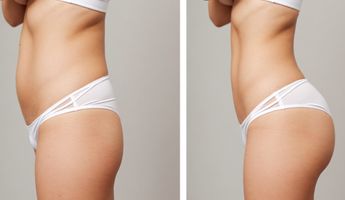
Find the best clinics for Fat Transfer in Santo Domingo
With Medijump you can browse 2 facilities offering Fat Transfer procedures in Santo Domingo. The cheapest price available is $1,314 in Santo Domingo. And for the cheapest price globally, prices start from $167 in Thailand.
Fat Transfer in Dominican Republic
Price: $ 1,314
Fat Transfer in Santo Domingo
Price: $ 1,314
Thailand offers the best prices Worldwide
Price: $ 167
From 10 verified reviews
Helen Tactuk, 15 March 2020
Really excellent, all the pre-operative care so that I was in conditions for surgery, wonderful care, always very attentive, very satisfied with the results I did two procedures and both were excellent, ethics, professionalism and dedication, I recommend it 100%
From 6 verified reviews
WANDA PAULINO, 08 April 2019
I had an excellent experience with this doctor. The clinic is extremely clean, organized, well- equipped and managed professionally. His staff is also very professional and helpful. (Specially Arianna and Nishmah 😊) And lastly I will say , for me Gustavo Almanzar is the best, I‘ve been following his work for a very long time and finally made the decision to get a breast reduction with him. He is truly talented. He exceeded my expectations when it comes to the results and the scar (which I was very afraid because my skin makes keloids). I was also concerned because of a few negative reviews that I saw, but I will definitely recommend him to anybody who is looking get A1 service and results! Bendiciones doctor❤️
- Home
- Dominican Republic
- Santo Domingo
Compare Before & After Photos of _procedure_photos.phpFat Transfer

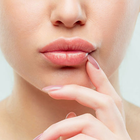
Front view
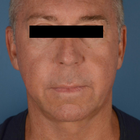
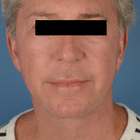
Front view
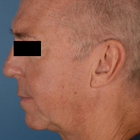
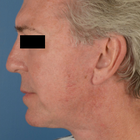
Full-side view
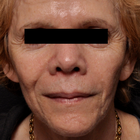
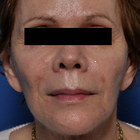
Front view
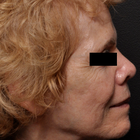
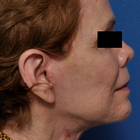
Full-side view
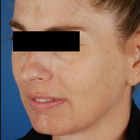

Half-side view
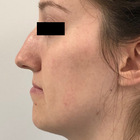
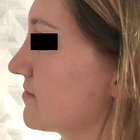
Full-side view
WHY US?
At Medijump, we're making medical easy. You can search, compare, discuss, and book your medical all in one place. We open the door to the best medical providers worldwide, saving you time and energy along the way, and it's all for FREE, no hidden fees, and no price markups guaranteed. So what are you waiting for?

Free

Best Price

Widest Selection

Risk-Free
What you need to know about Fat Transfer in Santo Domingo
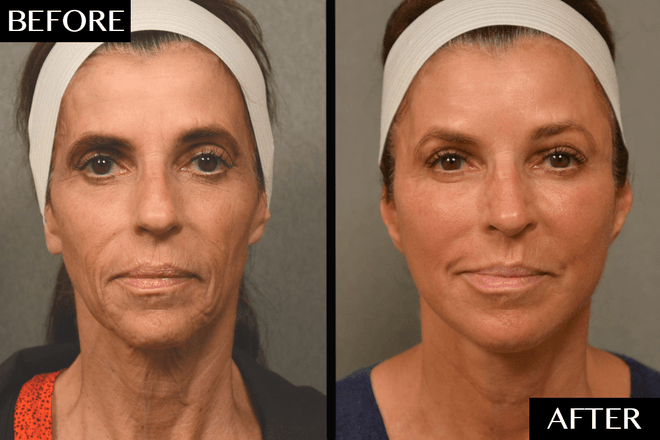
Also known as Fat Harvesting, Fat Grafting, Fat Injections, Lipofilling, Fat Transfer is a cosmetic surgery involving the movement of fat from one part of the body to another. During this procedure, your own fat will be used to fill in irregularities and grooves, primarily in the face, around the temples, eyes, chin, and lips. It can also be used to enhance the appearance of the breast, feet, hips, buttocks, and hands. The procedure is now a well-established technique that was perfected in the early nineties.
Some of the most common aesthetic indications for undergoing fat transfer / lipofilling include sunken cheeks, the disappearance of fat from the cheekbones, deep grooves running from the nose to the corners of the mouth, and in some instances of lines between the lower eyelids and the cheek. It is also one of the most common methods used for lip enhancement. In addition, lipofilling can be used to smooth out all types of irregularities such as those resulting from poorly performed liposuction or injuries.
The necessary fat is obtained by a limited liposculpture through one or several 3 to 5 mm incisions. It is normally taken from the abdomen or inner thigh. The aspirated fat is processed by centrifuging, filtering or rinsing. Pure liquid fatty tissue ready for injection is the result. The fat is then injected where needed. The fat is evenly distributed into the area by injecting minute amounts in the tissues so that the injected fat is well surrounded by healthy tissue. This ensures that the transplanted fat remains in contact with the surrounding tissues that must supply it with oxygen and nutrients.
What is the cost of Fat Transfer in Santo Domingo?
Being aware of the costs linked to the Fat Transfer pricing in Santo Domingo is vital for efficient budgeting and organizing. Pricing can differ greatly conditional to numerous things, such as the intricacies of the operation, the quantity of fat transferred, the surgeon's skill level, and the clinic's place. Conducting meticulous research and obtaining diverse quotations from multiple providers before settling is advisable.
Bear in mind, the Fat Transfer is generally deemed a vanity procedure, thus, it is not typically insured by health insurance providers. Exceptions may exist if the operation holds a medical necessity, like reconstruction operations post-mastectomy or injury. It's always advantageous to liaise with your insurance provider to grasp the specific details of your coverage and to ascertain the possible out-of-pocket expenses you could face.
What does a Fat Transfer Procedure Involve?
Consisting of two completely different procedures, extraction of fat called liposuction and transfer of fat through injections. Both the donor and recipient sites are sedated by giving local anesthesia. After this, fat is harvested through injections from the sites where adipocytes are tightly packed, such as the buttocks or abdomen. However, the fat present in lateral sides of the thighs and lower abdomen is also good fat as it contains a larger concentration of adipose-derived stem cells. These stem cells promote angiogenesis and adipogenesis at the recipient site - multiple injections are used to do this.
The material extracted is centrifuged, sedimented and filtered for excessive liquid and pure fat cells are injected just below the skin. This is the most difficult step of fat transfer to inject fat evenly in different layers of recipient tissue. Cannulas and syringes of different sizes are used to do this. In the case of breast augmentation, multiple fat injections are applied to the breasts. It is ensured that these fat cells are injected near a blood vessel so the cells don't die due to a lack of nutrition. Proper nutrition is needed for the cells to survive and grow.
What are the types of Fat Transfer?
Facial fat transfer: If you have facial creases, such as laugh lines, smile lines, and crow’s-feet, fat can be removed from your abdomen, thighs, or other areas and be injected into your face. Acne scars and sunken areas of the face, lips, and cheeks can also be filled in. Your plastic surgeon can even use grafted fat to minimize lines between your nose and mouth, correct skin depressions or indentations and minimize forehead wrinkles. (Facelift, Lip Augmentation)
Breast augmentation: Fat transfer breast augmentation essentially uses liposuction to take fat from other parts of your body and inject it into your breasts. This is a breast augmentation option for women who are looking for a relatively small increase in breast size and would prefer natural results.
Breast implants plus fat grafting: If your breast shape needs optimizing during a breast implant procedure, fat grafting can be useful. If you have residual breast irregularities after undergoing breast augmentation with implants, the irregularities can be filled in with fat to produce a smooth contour and an optimal shape.
Breast reconstruction with fat grafting: If you have breast defects following lumpectomy for breast cancer, fat grafting is an effective method for filling in these defects. Fat grafting is also an option for total breast reconstruction following mastectomy; however, to achieve sufficient breast volume, this is usually a multistage process that requires at least two to four sequential fat grafting procedures.
Buttock augmentation with fat grafting: Many people who desire a fuller, more rounded buttock will opt for a “Brazilian butt lift” which uses fat transfer to provide a more curvaceous buttock without the use of an implant. Liposuction is commonly used to both sculpt the surrounding area and collect the autologous fat to be injected.
Hand rejuvenation with fat grafting: Fat grafting into your hands is effective for adding volume, “plumping up” wrinkled areas, covering underlying vessels and tendons and improving the quality of your skin over time.
How Long Should I Stay in Santo Domingo for a Fat Transfer Procedure?
As an outpatient procedure, just a couple of hours are needed depending upon the amount of fat that is to be removed and transferred. You can leave the hospital on the same day or sometimes an overnight stay is advised, and in some cases, more than one session is needed. You should stay in Santo Domingo for at least 10-14 days after being discharged for regular check-ups. During this period, your health and results of the procedure are monitored by your surgeon.
The precise duration of your visit will primarily hinge on your personal situation, including the scope of your surgery, your total health condition, and your body's healing capability. It is always wise to engage in open dialogue with your surgeon about the anticipated period of your stay.
What's the Recovery Time for Fat Transfer Procedures in Santo Domingo?
The recovery period is different for different areas of your body. After a buttock augmentation, you have to sleep on your stomach or keep standing for at least 4 weeks. Because sitting can dissipate the fat. The shape of the augmented area might appear irregular initially, it will get a proper contour after some time. There will be moderate swelling and bruising at both the donor and the recipient sites for 2 weeks. Your face might appear fat and plump after fat grafting but it will settle down before long. You might suffer from moderate pain for a few days. Pain killers are given to deal with this. Almost 6 months are required for the results to fully show.
What sort of Aftercare is Required for Fat Transfer Procedures in Santo Domingo?
Things to consider:
- Regular checkups after being discharged.
- Take your medicines regularly, as and when prescribed by the doctor. Avoid self-medication.
- Follow a healthy diet plan for a better recovery.
- Ensure the presence of a friend or family member with you in the early few days to help you with house chores.
- Avoid excessive movement during the early few weeks and do not sit on your butts in case of butt fat transfer because it can dissipate the fat rendering it ineffective.
- Look for the signs of blood clot formation, excessive bruising, etc. Visit your doctor immediately if you find any abnormal thing.
What's the Success Rate of Fat Transfer Procedures in Santo Domingo?
When exploring any health-related process, the success ratio becomes a key element to consider. The efficiency of the Fat Transfer in Santo Domingo hinges upon various aspects such as proficiency and expertise of the surgeon, the health condition of the individual, and compliance to the guidelines of care after the operation. Fat transfer has been gaining fame due to its dual advantage of eliminating unnecessary fat from the body and accentuating preferred areas.
The outcomes of Fat Transfer show promising persistency. Many people have enjoyed pleasing results that lasted for a long span of time. Fat transfer for breast augmentation has increased by 76% in 2016 while for butt augmentation, a 26% increase has been witnessed. This approach also enjoys a commendable success ratio when it comes to patient satisfaction, with some researches revealing satisfaction percentages reaching up to 85%. It's however crucial to hold realistic anticipations, since factors like age, weight changes, and general health can sway the results. Regular consultations with your health provider are crucial for monitoring improvements and promptly dealing with any arising issues.
Are there Alternatives to Fat Transfer Procedures in Santo Domingo?
Fat grafting is an expensive technique as it consists of 2 different procedures. Following are some alternatives to it:
- Dermal fillers: these are given through injections to make your skin look plump. Sunken cheeks can be effectively corrected through this technique.
- Breast implants: for small breasts, implants are an alternative to fat grafting. A silicone implant is inserted into your breasts to increase their size.
- Breast reconstruction: cancer patients, who went through mastectomy can get their bust back by reconstructive surgery.
- Tummy tuck: This procedure tightens your abdominal muscles giving them a tighter and flattened appearance.
- Liposuction: excessive fat is removed from different parts of your body through liposuction. Your tummy looks flatter and you look smarter after this procedure.
- Cheek augmentation: in this technique, silicone implants are inserted into your cheeks to make them look bigger and plump.
All of the techniques mentioned above involve only one procedure.
What Should You Expect Before and After the Procedure
Understanding the process before and after undergoing the Fat Transfer is crucial to easing worries and ensuring a successful outcome. Before the process, your doctor will provide in-depth guidance on the requisite preparations. This might involve abstaining from certain drugs or supplements that may increase bleeding, and possibly, fasting if general anesthesia is planned. Thorough medical check-up and health evaluation will be performed to lower any prospective risks. In particular instances, your doctor may advocate lifestyle alterations such as quitting smoking because it can hinder the recovery process.
Following the Fat Transfer, patients might have minor swelling and bruising, but these usually recede in a few weeks. Aches and discomfort can be effectively controlled with prescribed medicine. Though recovery time varies among individuals, most return to work and resume everyday activities within one to two weeks. Your doctor will provide detailed instructions for a post-procedure care routine, possibly involving wearing pressure garments and regular review meetings to track healing and progress.
What are Potential Risks of Fat Transfer?
Possible complications can include:
- Blood clot formation, infections, and ulmonary embolism leading to the failure of fat grafting
- Absorption of the transferred fat by the body leading to asymmetry or irregularities in the treated area
- The formation of oil cysts or calcification which can interfere with radiological imaging
Whilst the information presented here has been accurately sourced and verified by a medical professional for its accuracy, it is still advised to consult with your doctor before pursuing a medical treatment at one of the listed medical providers
No Time?
Tell us what you're looking for and we'll reachout to the top clinics all at once
Enquire Now

Popular Procedures in Santo Domingo
Prices Start From $26

Prices Start From $113

Prices Start From $208

Prices Start From $275

Prices Start From $758

Prices Start From $5

Recommended Medical Centers in Santo Domingo for Fat Transfer

- Interpreter services
- Translation service
- Religious facilities
- Medical records transfer
- Medical travel insurance
- Health insurance coordination
- TV in the room
- Safe in the room
- Phone in the room
- Private rooms for patients available

- Interpreter services
- Translation service
- Religious facilities
- Medical records transfer
- Medical travel insurance
- Health insurance coordination
- TV in the room
- Safe in the room
- Phone in the room
- Private rooms for patients available

- Interpreter services
- Translation service
- Religious facilities
- Medical records transfer
- Medical travel insurance
- Health insurance coordination
- TV in the room
- Safe in the room
- Phone in the room
- Private rooms for patients available

- Interpreter services
- Translation service
- Religious facilities
- Medical records transfer
- Medical travel insurance
- Health insurance coordination
- TV in the room
- Safe in the room
- Phone in the room
- Private rooms for patients available

- Interpreter services
- Translation service
- Religious facilities
- Medical records transfer
- Medical travel insurance
- Health insurance coordination
- TV in the room
- Safe in the room
- Phone in the room
- Private rooms for patients available

- Interpreter services
- Translation service
- Religious facilities
- Medical records transfer
- Medical travel insurance
- Health insurance coordination
- TV in the room
- Safe in the room
- Phone in the room
- Private rooms for patients available

- Interpreter services
- Translation service
- Religious facilities
- Medical records transfer
- Medical travel insurance
- Health insurance coordination
- TV in the room
- Safe in the room
- Phone in the room
- Private rooms for patients available

- Interpreter services
- Translation service
- Religious facilities
- Medical records transfer
- Medical travel insurance
- Health insurance coordination
- TV in the room
- Safe in the room
- Phone in the room
- Private rooms for patients available

- Interpreter services
- Translation service
- Religious facilities
- Medical records transfer
- Medical travel insurance
- Health insurance coordination
- TV in the room
- Safe in the room
- Phone in the room
- Private rooms for patients available

- Interpreter services
- Translation service
- Religious facilities
- Medical records transfer
- Medical travel insurance
- Health insurance coordination
- TV in the room
- Safe in the room
- Phone in the room
- Private rooms for patients available
Fat Transfer in and around Santo Domingo
About Santo Domingo
Santo Domingo, the capital of the Dominican Republic and is the most modern and largest metropolis in the Caribbean. The city is the cultural, political, financial, industrial, and commercial center of the Dominican Republic. Founded by Bartholomew Columbus in 1496, Santo Domingo is the oldest styled European City in the Americas. The city has everything that will make any visit worthwhile, from large shopping malls, historical architecture, seaside resorts, to a vibrant nightlife.
Over the last several years, medical tourism in Santo Domingo has been growing steadily. The city contributed to the Dominican Republic’s medical tourism average income of US$265.0 million in 2018. The most popular procedures in Santo Domingo are cosmetic and plastic surgery, dental surgery, cardiology, and heart surgery. Santo Domingo has everything a medical tourist could ask for, including:
- Hospitals and wellness centers governed by international standards.
- The doctors and paramedical staff are well-qualified and studied in the best medical schools from the U.S. and Europe.
- Cost-effective medical treatments with modern technology.
- A wide range of medical treatments to choose from.
- Fast, immediate care without waiting lists.
- The ideal climate and environment for recovery.
Popular Areas in Santo Domingo
Located in the heart of the Caribbean, Santo Domingo has a rich historical and cultural heritage. The Colonial City, a UNESCO World Heritage Site, will amaze tourists with its beautiful architecture and rich history. The neighborhood consists of colonial buildings turned into shops, hotels, museums, and cafés. History fans can enjoy the oldest standing cathedral in the Western hemisphere: Catedral Primada de América.
Mercado Modelo is shopping heaven on Avenida Mella on the outskirts of Colonial City. Tourists will find an indoor maze of small shops offering local crafts, treats, and specialties.
Tourists who want to indulge in nature can go to Jardín Botánico Nacional de Santo Domingo as the gardens are filled with native plants and offer an excellent insight into the natural flora of Santo Domingo, the largest botanical gardens in the Caribbean. The botanical gardens are also home to hundreds of different kinds of orchids.
Santo Domingo has many wonderful beaches since the city’s waterside stretches along the Caribbean Sea. Tourists can go to Playa Najayo or Playa Juan Dolio for picturesque views or enjoy the sparkling blue water. The sunsets are particularly breathtaking.
Weather and Climate in Santo Domingo
The city enjoys a tropical climate that sees warm and humid weather all year long. The wet season (rainy season) starts from May to November, the average temperature on the wet season is around 22 - 31°C with the humidity slightly higher.
December to April is the best time to visit Santo Domingo since it is the dry season. The average temperature ranges between 19°C to 29°C. Showers may occur but they usually do not last long. Tourists should avoid traveling to Santo Domingo during Hurricane Season which runs from August to October.
Getting Around in Santo Domingo
There are two airports in Santo Domingo. The main airport is Las Américas International Airport (also known as Santo Domingo Airport), located Punta Caucedo and Boca Chica, 32km east of the city. This airport has international connections from North America, South America, and Central America to Europe. The airport serves many major airlines such as Delta, Emirates, and American Airlines. Las Américas International Airport also serves budget airlines such as JetBlue. La Isabela International Airport primarily serves domestic flights and some international flights to other Caribbean Islands. The airport is the major hub for Dominican airlines that operates small aircraft.
To get into the city from the airports, tourists can choose taxi, airport shuttle, public bus, shared van, or car rental. Traveling by taxi can get a bit more expensive although it is a good transportation option. The cost to Colonial City from Las Américas International Airport is around US$40. The cheaper option is to ride the public bus (Guagua), the buses depart to Parque Enriquillo in the city center and to Boca Chica.
Getting around in Santo Domingo is fairly easy. To get the most of Colonial City, walking is the best way since they offer plenty of pedestrian attractions, but walking along streets outside Colonial City can be quite challenging.
Taxis in Santo Domingo don’t use meters, tourists have to agree on the fare in advance. The standard fare is around RD$250. It is best not to take any unmarked taxi because it could be dangerous. Tourists usually need to call a dispatcher to have a taxi sent to their location, most businesses and hotels will gladly call a taxi for tourists and this is the safest option.
Tourists can take Públicos, minivans that follow a predetermined route but stops wherever someone flags them down. The fare usual fare is RD$25. Tourists can also take the Santo Domingo Metro, rides cost around RD$15, a contactless card can be purchased to use the metro.
Buses are also available from 6.30 am to 9.30 pm and cost around RD$25, the bus stops are marked with a sign and a word parade which means stop, the routes tend to follow major streets.
Tourists Visas in Santo Domingo
Dominic Republic exempts nationals from 107 countries including the US, Canada, most South American countries, the European Union, and several other countries from Asia and Africa from obtaining a tourist visa. A passport valid for at least six months is required to enter the country.
Visitors need to apply for a tourist card that can be obtained at the Dominican Consulates or directly upon arrival at the airports in the Dominican Republic. The tourist card costs US$10 and is valid for 30 days. Tourists who want to extend their visit will have to go to the offices of Direccion General de Migracion and pay for an extension.
Additional Information
- Local Currency: The local currency in Santo Domingo is the Dominican Peso (RD$). US$ 1 is equivalent to RD$47. The notes are printed in a variety of colors although some colors are very similar to each other.
- Money & Payments: ATMs can be found across Santo Domingo. The best and safest way to obtain Dominican pesos is by ATMs. Credit and debit cards (mostly Visa and MasterCard) are accepted in cities, but some business adds a surcharge for credit card purchases. Tipping is generally not expected as 10% to 20% is mostly added to the total bill. Tourists should tip tour guides.
- Local Language: The Dominican Republic is a Multilanguage nation. However, Spanish is the official language. Other commonly spoken languages in Santo Domingo are Dominican Spanish, Haitian Creole, and Samana English. English is not widely spoken but there are English speaking staff and guides within the tourist areas.
- Local Culture and Religion: Roman Catholic Christianity is the major religion in Santo Domingo. Other religions including Protestant Christianity, Judaism, and Buddhism are also freely practiced.
- Public Holidays: Santo Domingo celebrates Christian holidays such as Good Friday and Christmas Day. The city hosts a carnival at the end of February and the beginning of March, the international book fair is in April, as well as a merengue festival in July.
Popular Searches
- Plastic Surgery in Thailand
- Dental Implants in Thailand
- Hair Transplant in Thailand
- Breast Augmentation Thailand
- Gastric Sleeve in Thailand
- Gender Reassignment Surgery in Thailand
- Laser Hair Removal in Bangkok
- Botox in Bangkok
- Dermatology in Bangkok
- Breast Augmentation in Bangkok
- Coolsculpting in Bangkok
- Veneers in Turkey
- Hair Transplant in Turkey
- Rhinoplasty in Turkey
- Stem Cell Therapy in Mexico
- Rhinoplasty in Mexico
- Liposuction in Mexico
- Coolsculpting in Tijuana
- Rhinoplasty in Korea
- Scar Removal in Korea
- Gastric Sleeve in Turkey
- Bone Marrow Transplant in India
- Invisalign in Malaysia
- Plastic Surgery in the Dominican Republic
- Tummy Tuck in the Dominican Republic
- Plastic and Cosmetic Surgery in Poland
- Rhinoplasty in Poland
- Hair Implant in Poland
- Dental Implants in Poland
- IVF in Turkey

